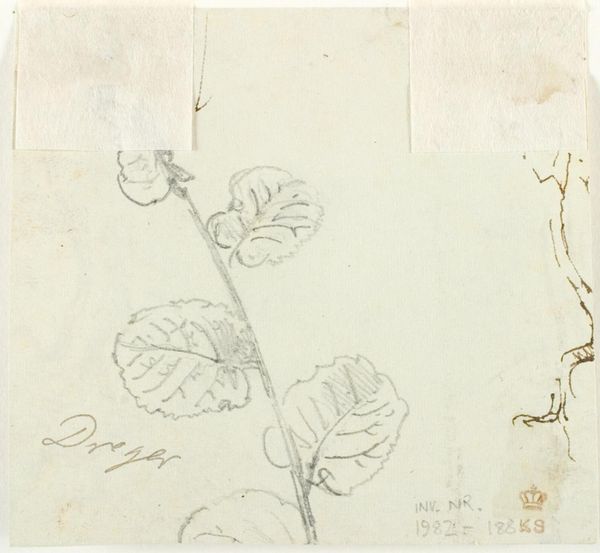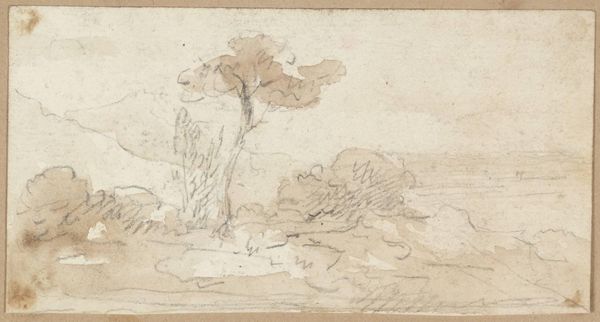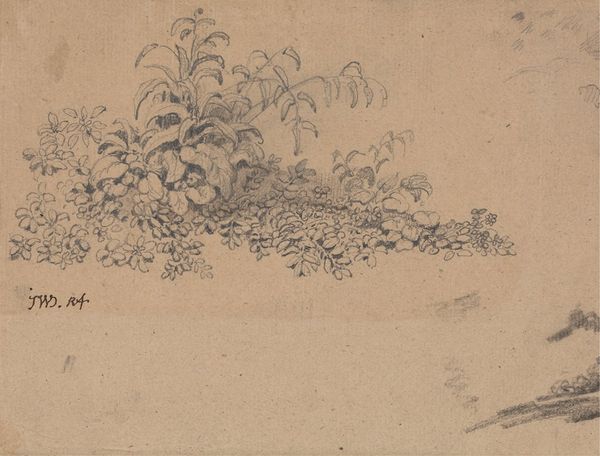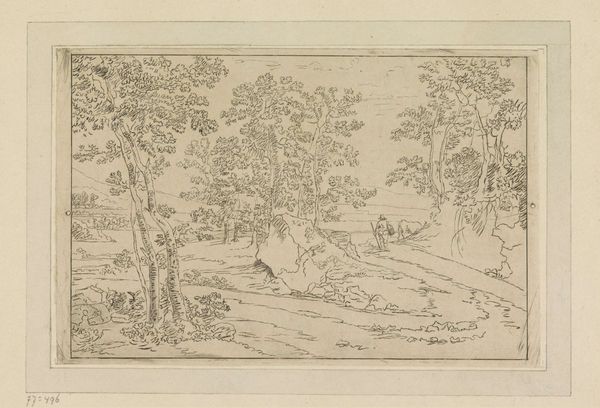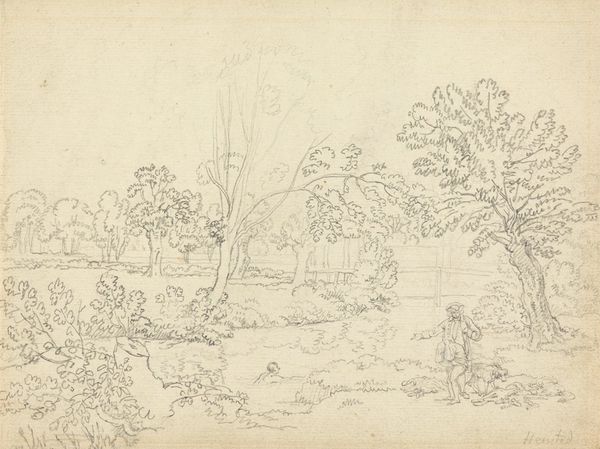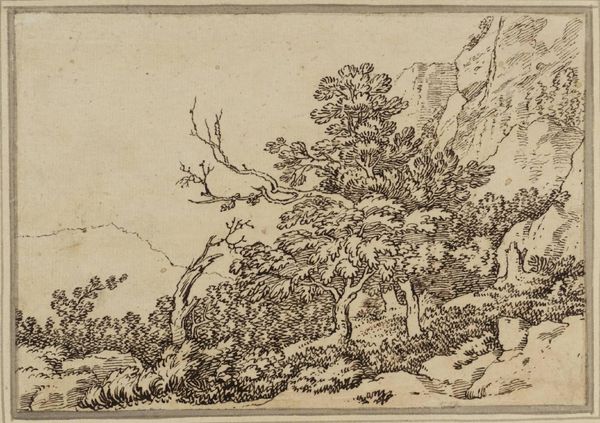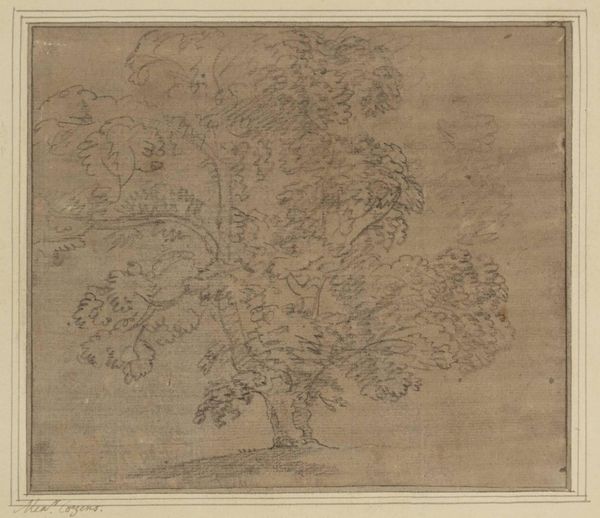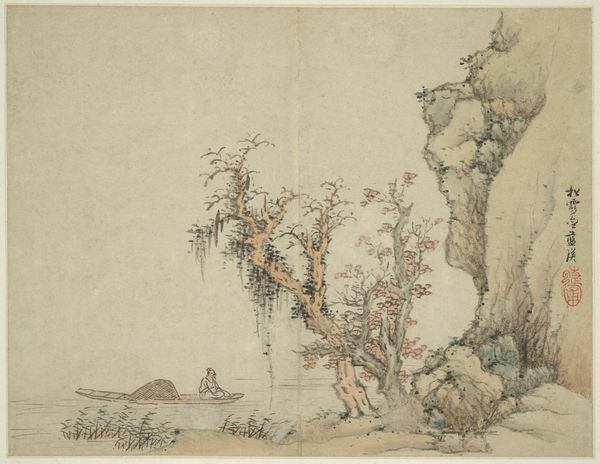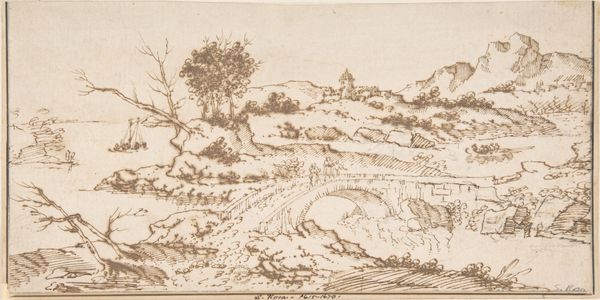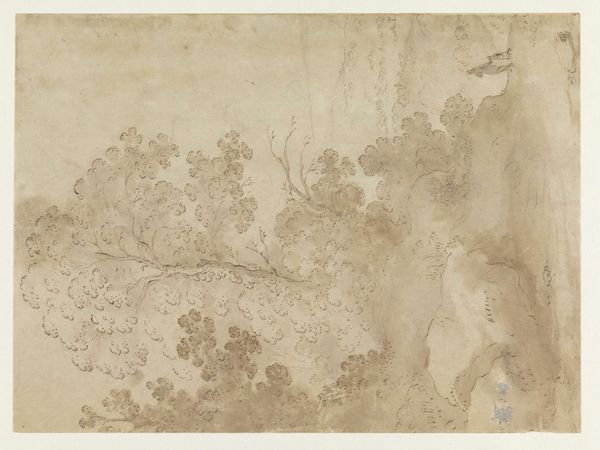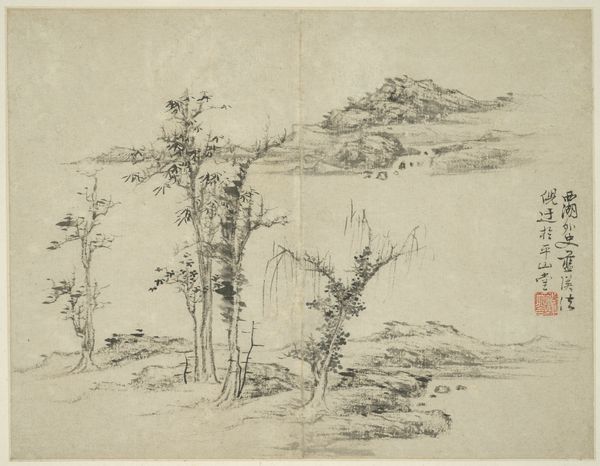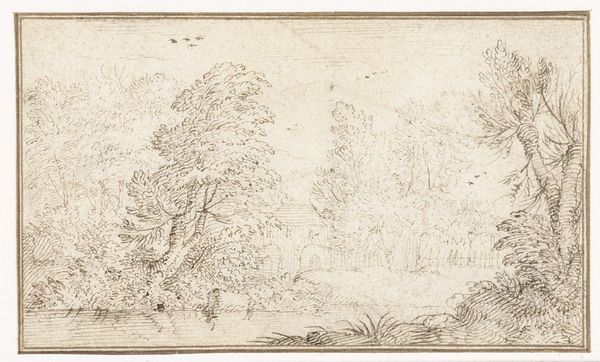
drawing, paper, ink
#
drawing
#
baroque
#
landscape
#
paper
#
ink
Dimensions: height 160 mm, width 212 mm
Copyright: Rijks Museum: Open Domain
Editor: Here we have Claude Lorrain's "Study of Plants," an ink drawing on paper, dating back to the late 1660s. It feels incomplete, almost like a fleeting thought captured on paper. How do you interpret this work, and what is it trying to say? Curator: I see this not as incomplete, but rather as a radical act of observation within a patriarchal structure that prioritizes finished "masterpieces". Consider the social context of 17th-century landscape art. Often, nature was depicted as tamed, controlled, reflecting a desire to dominate and possess the land, mirroring societal hierarchies. Editor: So, you're saying the sketchiness is a statement? Curator: Precisely! Lorrain, in his focus on fleeting light and shadow, presents nature as a dynamic process rather than a static commodity. It challenges the idea of ownership and invites us to contemplate the inherent value of natural spaces. Note the foreground detail fading into softer focus - is that a duck at the bottom? Editor: Yes, it looks like it! What does that mean? Curator: The presence of a common duck introduces an element of the everyday, a quiet critique against grand, often staged, landscape paintings favored by the aristocracy. We are invited to reconsider our relationship with the environment. Whose stories were deemed important at the time, and who was allowed to tell those stories? Lorrain seems to give nature a voice, quite literally. Editor: I hadn't thought about it that way. It's amazing how a simple sketch can hold such a powerful message! Curator: Exactly. It teaches us to read the absences and the silences in art, to excavate the narratives that challenge the dominant ideologies. Editor: This experience really changed my understanding of the drawing. Now, the seemingly casual plants evoke pressing issues. Curator: Indeed. Art offers multiple perspectives that reveal inequalities, so it helps promote societal change.
Comments
No comments
Be the first to comment and join the conversation on the ultimate creative platform.
